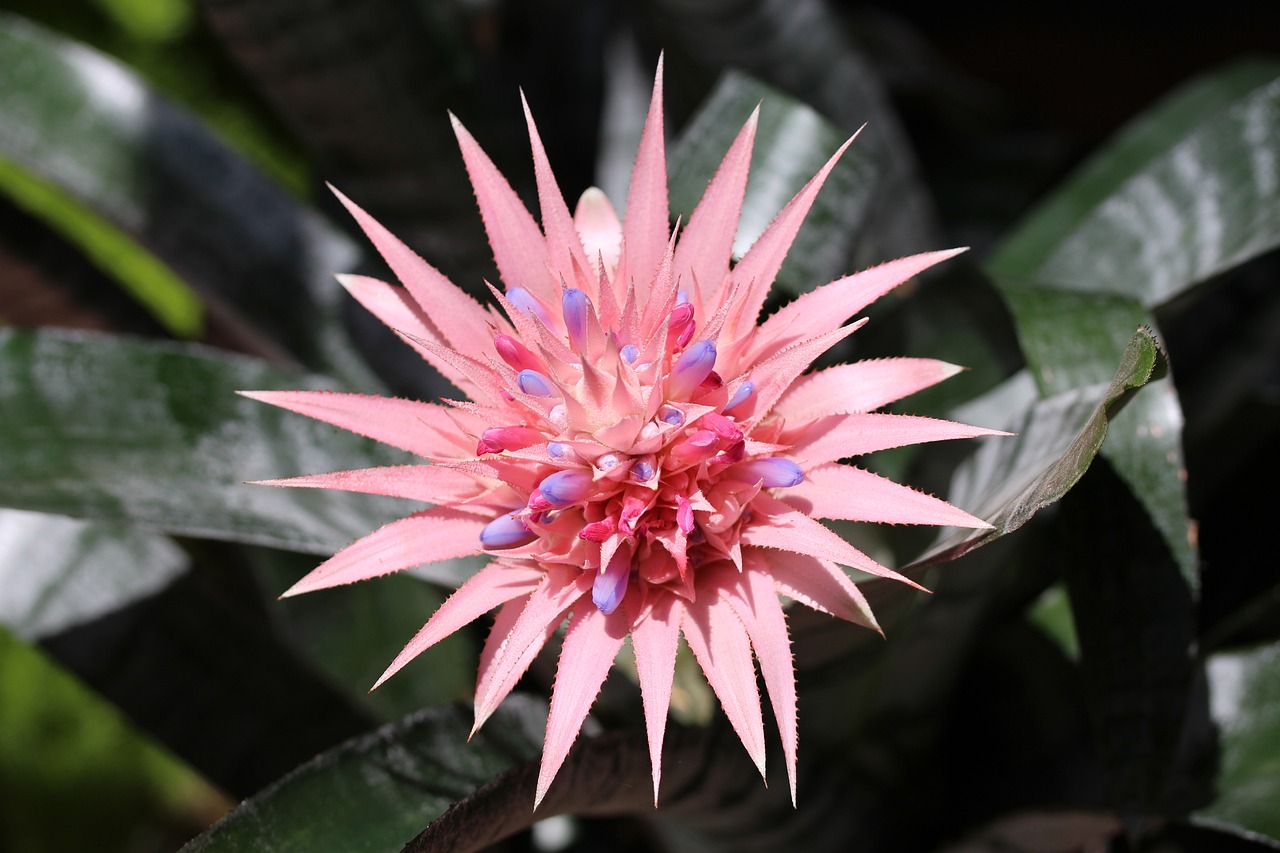Bromeliads are a unique and fascinating group of plants that can make a great addition to any indoor or outdoor garden. These tropical plants are known for their striking leaves, bold colors, and long-lasting flowers, making them a popular choice for home décor and landscaping. But in order to keep your Bromeliads healthy and thriving, it’s important to understand the basics of their care and maintenance.
Most popular bromeliads
There are many species of Bromeliads that are well suited for growing indoors, but here are some of the most popular:
- Guzmania: This is a popular species of Bromeliad that is native to the tropical rainforests of South America. Guzmania plants produce vibrant, long-lasting blooms in shades of red, orange, yellow, and pink. They are easy to care for and make great houseplants.
- Neoregelia: This is a low-growing Bromeliad that is often grown in terrariums or dish gardens. Neoregelia plants are known for their colorful foliage, which can be green, red, pink, or purple. They prefer bright, indirect light and high humidity.
- Aechmea: This is a larger species of Bromeliad that is often grown as a specimen plant in a large pot. Aechmea plants produce large, showy blooms in shades of pink, red, orange, and yellow. They are also known for their striking foliage, which can be green, silver, or maroon.
- Billbergia: This is a tall, upright species of Bromeliad that is often grown as a specimen plant. Billbergia plants produce bright, long-lasting blooms in shades of blue, purple, and pink. They prefer bright, indirect light and high humidity.
- Vriesea: This is a large species of Bromeliad that is often grown as a specimen plant. Vriesea plants produce long-lasting blooms in shades of red, orange, yellow, and pink. They are also known for their striking foliage, which can be green, silver, or maroon.
By providing these popular Bromeliads with the right growing conditions, you can enjoy their beauty and exotic appeal indoors. With a little bit of care and attention, these plants can be a stunning addition to your home or office.
Growing Bromeliads Indoors
Bromeliads are well-suited to indoor living, making them a great choice for those who want to bring some of the tropics into their home. These plants are easy to care for and can be grown in a variety of lighting conditions, from bright, direct sunlight to low light.
Sunlight Requirements
While Bromeliads can adapt to different lighting conditions, it’s important to understand the impact of sunlight on their growth and health. These plants need bright, indirect light in order to thrive. If you’re growing your Bromeliad indoors, place it near a bright window but out of direct sunlight, which can scorch its leaves. If you don’t have access to bright, indirect light, you can use artificial lights to supplement your Bromeliad’s sunlight needs.
Ideal Temperature Range
Bromeliads are native to tropical environments and prefer warm temperatures, so it’s important to maintain a consistent temperature range of between 60°F and 90°F. Avoid exposing your Bromeliad to sudden temperature changes or drafts, as this can cause stress and harm to the plant.
Humidity Requirements
Bromeliads are native to humid environments, so it’s important to maintain high humidity levels around the plant. You can increase humidity by placing a tray of water near the plant, misting it regularly, or using a humidifier.
In order to maintain optimal humidity levels, it’s important to mist your Bromeliad regularly. Misting once or twice a week is usually sufficient, but you may need to mist more frequently if the air in your home is dry.
Watering Your Bromeliad
One of the most important aspects of Bromeliad care is watering. These plants have a unique water storage system in the center of their leaves, so it’s important to keep the „tank” filled with water. When watering your Bromeliad, fill the tank with water and allow it to drain out the bottom of the pot. Avoid getting water on the leaves or the base of the plant, as this can cause rot.
Bromeliads are sensitive to chemicals and minerals in water, so it’s best to use distilled or purified water. If you must use tap water, let it sit overnight to allow chemicals and minerals to dissipate before using it to water your Bromeliad.
Fertilizing Your Bromeliad
Bromeliads are slow-growing plants, so they don’t need to be fertilized very often. However, in order to support healthy growth and flowering, it’s important to fertilize your Bromeliad regularly.
The best fertilizer for Bromeliads is a balanced, water-soluble fertilizer with a ratio of 20-20-20. Avoid using fertilizer with high levels of nitrogen, as this can encourage leaf growth at the expense of flowers.
Bromeliads should be fertilized every 4 to 6 weeks during the growing season (spring and summer), and once every 2 to 3 months during the dormant season (fall and winter). It’s important to follow the manufacturer’s instructions when applying fertilizer to ensure that you’re not over-fertilizing, which can harm your Bromeliad.
Soil Requirements
Bromeliads don’t grow in soil like most plants. Instead, they grow in a mixture of bark, peat, and perlite. This type of soil provides good drainage and aeration, which is essential for the health of the plant’s roots. When potting your Bromeliad, make sure to use a well-draining potting mix and avoid over-watering.
Repotting Your Bromeliad
Bromeliads don’t need to be repotted very often, but it’s important to repot your plant when its roots have filled the pot. Repotting should be done in the spring, when the plant is starting its active growth phase. When repotting, make sure to use a fresh potting mix and a pot that is only slightly larger than the previous one.
Propagating Bromeliads
Bromeliads are easy to propagate and can be propagated through offsets, or “pups”, which form at the base of the parent plant. When the pups are large enough, they can be separated from the parent plant and potted in a separate pot. It’s important to wait until the pups have developed their own roots before separating them from the parent plant.
Pests and Diseases
Bromeliads are relatively pest and disease-free, but they can be susceptible to mealybugs, scale insects, and spider mites. In order to prevent pest and disease problems, it’s important to maintain good growing conditions and to avoid over-watering. If you do notice pests on your Bromeliad, you can treat the plant with a mild soap solution or a pesticide specifically formulated for use on Bromeliads.
Conclusion
Bromeliads are beautiful and exotic plants that are well suited for growing indoors. By providing the right amount of sunlight, temperature, humidity, water, and nutrients, you can ensure that your Bromeliad will thrive and bloom for years to come. With a little bit of care and attention, these tropical plants can be a stunning addition to your home or office.
Image: Pixabay.com



